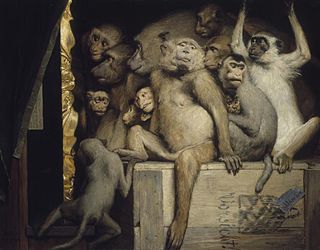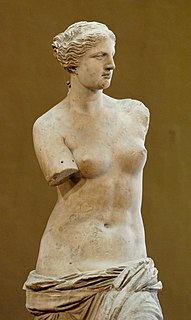 W
WArt criticism is the discussion or evaluation of visual art. Art critics usually criticize art in the context of aesthetics or the theory of beauty. A goal of art criticism is the pursuit of a rational basis for art appreciation but it is questionable whether such criticism can transcend prevailing socio-political circumstances.
 W
WAmerican Visions: The Epic History of Art in America is a 1997 book by art critic Robert Hughes. It was also turned into a 6-part documentary series featuring the author.
 W
WArt history is the study of aesthetic objects and visual expression in historical and stylistic context. Traditionally, the discipline of art history emphasized painting, drawing, sculpture, architecture, ceramics and decorative arts, yet today, art history examines broader aspects of visual culture, including the various visual and conceptual outcomes related to an ever-evolving definition of art. Art history encompasses the study of objects created by different cultures around the world and throughout history that convey meaning, importance or serve usefulness primarily through visual representations.
 W
WArt in the San Francisco Bay Area, 1945-1980: An Illustrated History is a 1985 nonfiction book by art critic Thomas Albright, about the modern history of art in the San Francisco Bay Area. It was published by the University of California Press.
 W
WAttitude as a term of fine art refers to the posture or gesture given to a figure by a painter or sculptor. It applies to the body and not to a mental state, but the arrangement of the body is presumed to serve a communicative or expressive purpose. An example of a conventional attitude in art is proskynesis to indicate submissive respect toward God, emperors, clerics of high status, and religious icons; in Byzantine art, it is particularly characteristic in depictions of the emperor paying homage to Christ. In 20th- and 21st-century art history, "attitude" is used most often to label one of these conventional postures; another example is the orans pose.
 W
WThe history of art criticism, as part of art history, is the study of objects of art in their historical development and stylistic contexts, i.e. genre, design, format, and style, which include aesthetic considerations. This includes the "major" arts of painting, sculpture, and architecture as well as the "minor" arts of ceramics, furniture, and other decorative objects.
 W
WOdd Man Out: Readings of the Work and Reputation of Edgar Degas is a 1991 book by Carol Armstrong. It is about the paradoxes surrounding Edgar Degas and his works.
 W
W"Ornament and Crime" is an essay and lecture by modernist architect Adolf Loos that criticizes ornament in useful objects.
 W
WParergon is an ancient Greek philosophical concept defined as a supplementary issue. Parergon is also referred to as "embellishment" or extra.
 W
WSignificant form refers to an aesthetic theory developed by English art critic Clive Bell which specified a set of criteria for what qualified as a work of art. In his 1914 Book Art, Bell postulated that for an object to be deemed a work of art it required potential to provoke aesthetic emotion in its viewer, a quality he termed "significant form." Bell's definition explicitly separated significant form from beauty; in order to possess significant form, an object need not be attractive as long as it elicits an emotional response.
 W
WThe Story of Art, by E. H. Gombrich, is a survey of the history of art from ancient times to the modern era.
 W
WVelificatio is a stylistic device used in ancient Roman art to frame a deity by means of a billowing garment. It represents "vigorous movement," an epiphany, or "the vault of heaven," often appearing with celestial, weather, or sea deities. It is characteristic of the iconography of the Aurae, the Breezes personified, and one of the elements which distinguish representations of Luna, the Roman goddess of the Moon, alluding to her astral course.